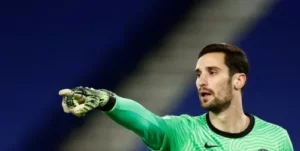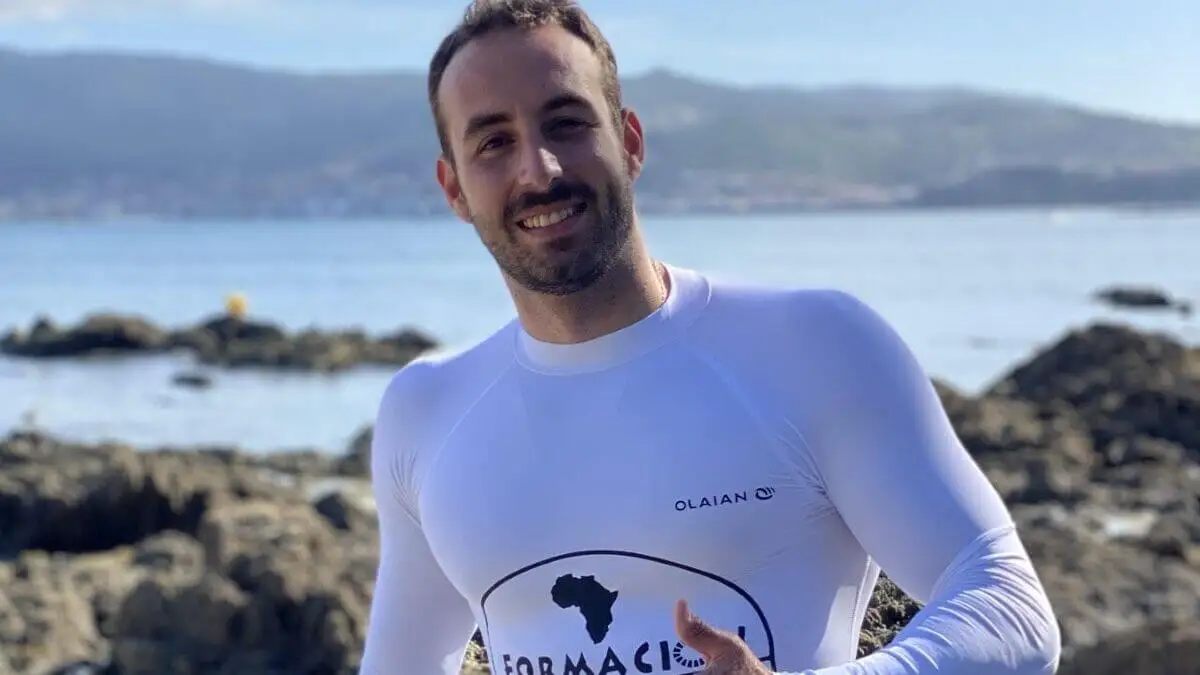Sergio Rico Recovers: Is It Possible to Return to Sport After an Induced Coma?


Reviewed and approved by the doctor Leonardo Biolatto
After 22 days in an induced coma following a horseback riding accident, Sergio Rico, the PSG goalkeeper awakened and was able to come out of sedation. His partner, Alba Silva, said that he recognized his loved ones, although he hasn’t yet regained his speech.
While this is an important and hopeful step, the after-effects can be diverse and the process is long. However, other athletes have had exceptional rehabilitations that allowed them to return to professional sport.
Sergio Rico and his induced coma
After winning the Ligue 1 title with Paris Saint-Germain, the Spanish goalkeeper traveled to the village of El Rocío in Huelva, Spain. There he suffered a fall while riding a horse during the religious pilgrimage there. The animal kicked him in the head, causing a cranioencephalic traumatism with a brain injury.
He was immediately transferred to the Intensive Care Unit (ICU) of the Virgen del Rocío Hospital in Seville, where he was intubated and placed in an induced coma. Also known as “pharmacological coma”, this is a procedure that deliberately reduces brain functions.
Through different medications, the patient is sedated so that the brain’s activities require less oxygen, blood and glucose. In this way, the organ “rests” and recovery is helped.
Because brain injuries increase intracranial pressure, an induced coma seeks to protect against such damage by reducing blood flow and fluid accumulation. Meanwhile, the patient is constantly monitored to check their evolution.
Although it’s generally a safe procedure, it carries risks, which means it should only be used in extreme cases.
Read more: 10 Pillars for Your Brain Health
How will Sergio Rico’s recovery continue?
The time a patient spends in a pharmacological coma depends on each case, but doctors always try to keep it as short as possible. It can be between 2 days and 2 weeks, although there are people who have spent more than 6 months.
As for recovery, it’s subject to the initial damage, among other aspects. Sergio Rico’s case was that of a traumatism with brain injury.
It’s common for people to go through the following problems when they come out of an induced coma:
- Blood clots in the legs due to inactivity
- Loss of muscle mass
- Neurological alterations
- Urinary infections
These types of injuries may have physical or psychological sequelae. However, it’s very difficult to determine their extent, as it depends on the severity. As for Sergio Rico, there’s no doubt that the goalkeeper has taken a great step towards recovery.
Is it possible to return to sport after an induced coma?
Rehabilitation is slow and progressive. The first thing that’s usually done is a series of evaluations by physiotherapists, psychologists, kinesiologists, and speech therapists. All these professionals accompany the recovery process, as it’s common for it to take weeks or months to speak or walk again.
In addition, the lost muscle mass must be recovered; something that’s key for a soccer player like Sergio Rico. For this reason, the role of kinesiologists is essential. They usually carry out resistance and muscle-strengthening exercises, cardiorespiratory activation, and cognitive stimulation, among other things.
Exercise in recovery
The recovery is different in each individual case, but, with time, many people recover completely. A Cochrane Library publication, which compiles several studies conducted on patients who have undergone intensive care, suggests that the positive effect of exercise programs depends on each individual case.
The compilation includes 6 studies conducted on 483 participants. Half of them reported improvements in functional exercise capacity, while the remainder found no effect. The publication concludes that it’s not possible to determine an overall effect of these exercises after ICU discharge.
Find out more: Parts of the Brain and Their Functions
Athletes who returned to activity after an induced coma
Here are some examples of people who went through a pharmacological coma and who were able to return to sporting activities.
Fabio Jakobsen
The Dutch cyclist suffered a serious fall during the Tour of Poland in 2020, which caused injuries to his jaw, face and skull. He lost almost all his teeth, received 130 stitches in his face and his vocal cords were paralyzed.
After a few days in an induced coma and several operations, he began to evolve favorably. Despite the injuries, only 3 months after the event he was able to return to cycling, and 8 months later he returned to professional competitions in the Tour of Turkey.
Jakobsen represents an emblematic case in sports recovery after going through an induced coma. In addition to the physical work, his mental strength to return to the elite circuits, where he also achieved significant victories, stands out.

Álvaro Trigo
This runner from Madrid, Spain, suffered an accident in 2018. The house where he was staying caught fire and he suffered burns on 63% of his skin. He remained in a coma for 10 days, while he had to undergo numerous grafts to recover his skin.
Little by little, he began to walk again and, while the forecasts for him to be able to run again weren’t encouraging, he concentrated his efforts on training that made it possible for him to enter the Seville marathon. Only a year after the accident, Trigo was able to take part in that competition.
He then participated in the Formentera to Seville swim event in 2021, and the Cies Islands to Vigo swim the following year. At the same time, he continued to train for new marathons and kayak races.

Junior Sambia
In 2020, the French soccer player was put into an induced coma due to the severity of the symptoms he suffered after he got COVID. He had to be intubated and placed on a ventilator.
However, he was able to wake out of the coma and begin his recovery. Sambia started to play again and was signed by Italian club Salernitana, where he currently plays as a midfielder.

Sergio Rico is recovering, but has a long road ahead
The news that the goalkeeper is out of sedation is encouraging for his overall health. However, the rehabilitation ahead of him is arduous and progressive.
Little is known about the extent of the initial brain damage he suffered, so it’s also difficult to know if he will have sequelae or if he’ll be able to return to competition. However, as we’ve seen, it is possible to return to sport after an induced coma, as several athletes have already demonstrated.
REUTERS main image.
All cited sources were thoroughly reviewed by our team to ensure their quality, reliability, currency, and validity. The bibliography of this article was considered reliable and of academic or scientific accuracy.
- Connolly B, Salisbury L, O’Neill B, Geneen LJ, Douiri A, Grocott MPW, Hart N, Walsh TS, Blackwood B. (2015). Rehabilitación con ejercicios después del alta de la unidad de cuidados intensivos para la recuperación de enfermedades graves. Biblioteca Cochrane. [fecha de Consulta 21 de junio de 2023]. https://www.cochrane.org/es/CD008632/EMERG_rehabilitacion-con-ejercicios-despues-del-alta-de-la-unidad-de-cuidados-intensivos-para-la
- García, S., Sauri Suárez, S., Meza Dávalos, E., & Villagómez, A. D. J. (2013). Estado de coma y trastornos de la conciencia: una revisión analítica desde un enfoque neurofuncional. Parte I. Revista de Especialidades Médico-Quirúrgicas, 18(1),56-68. [fecha de Consulta 21 de junio de 2023]. ISSN: 1665-7330. Recuperado de: https://www.redalyc.org/articulo.oa?id=47326333009
- García Saiz, J. (2018). Revisión selectiva de la importancia de la fisioterapia en el paciente adulto en estado de coma estructural no traumático. Trabajo fin de grado. Facultad de fisioterapia de Soria. Universidad de Valladolid. [fecha de Consulta 21 de junio de 2023]. https://uvadoc.uva.es/bitstream/handle/10324/31789/TFG-O-1345.pdf;jsessionid=D2D7C33C05FC7A50F27D6CE885BCF429?sequence=1
This text is provided for informational purposes only and does not replace consultation with a professional. If in doubt, consult your specialist.








